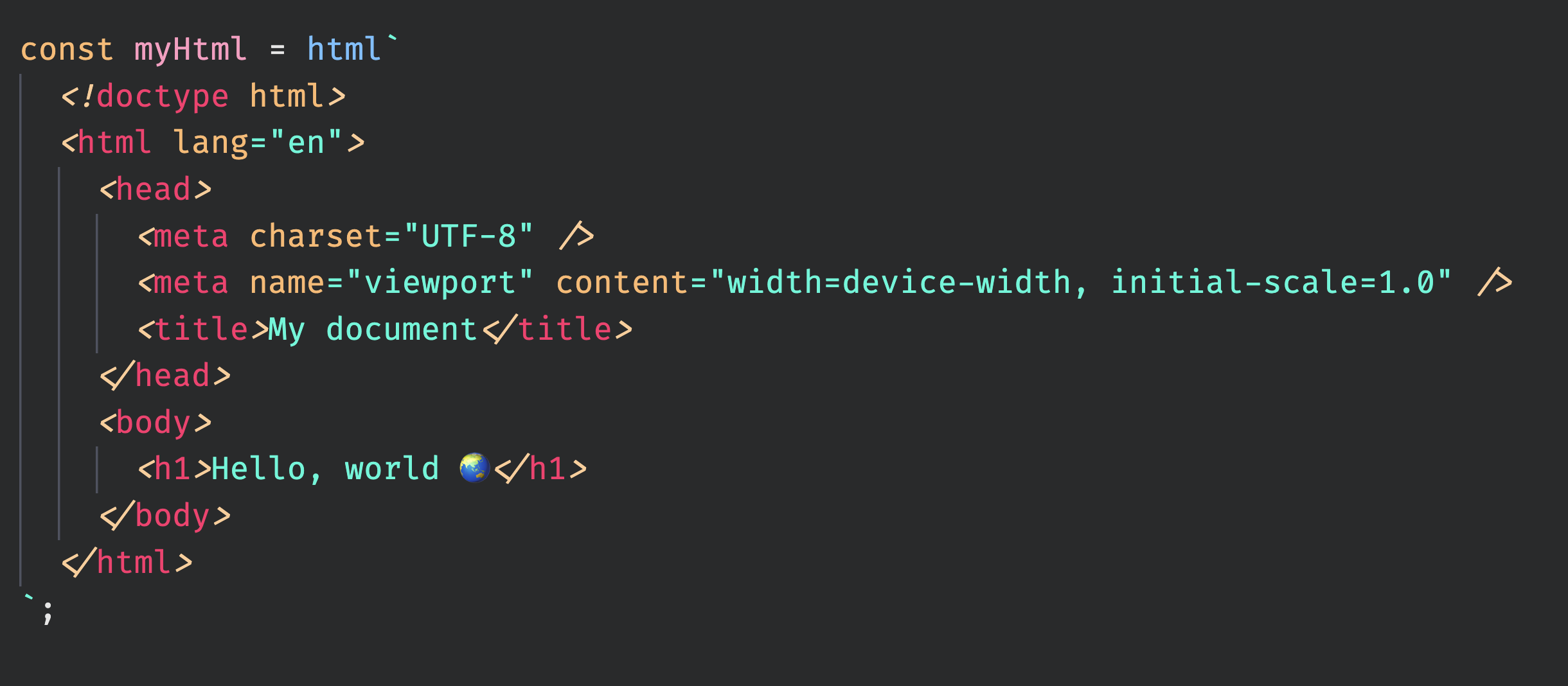
Using tagged template literals to syntax highlight code in strings
Sometimes as developers we have to write code that generates code. This can be for a number of reasons, but one of the most common ones is that we want to generate HTML or CSS from JavaScript. This is a common pattern in libraries like styled-components and Lit, but it's also something you might want to do if you're writing a tool that generates HTML or CSS.
The problem #
This code often ends up as strings in JavaScript, and strings get no syntax highlighting. This is because the editor doesn't know that the string contains HTML or CSS, and will therefore highlight it as a regular JavaScript string. This is bad for readability and makes it easy to introduce bugs to the HTML or CSS code.
The solution #
We can use a few String.raw "hacks" to make Prettier format CSS and HTML strings!
The String.raw tagged template literal is basically a no-op and won't do any changes to the template string, but if you assign it to a variable with the name html or css, tools like Prettier and VS Code will interpret the string as HTML or CSS respectively ✨
Before:
const myCss = `
h1 {
color: hotpink;
}
`;
const myHtml = `
<!DOCTYPE html>
<html lang="en">
<head>
<meta charset="UTF-8">
<meta name="viewport" content="width=device-width, initial-scale=1.0">
<title>My document</title>
</head>
<body>
<h1>Hello, world 🌏</h1>
</body>
</html>
`;After:
const css = String.raw;
const html = String.raw;
const myCss = css`
h1 {
color: hotpink;
}
`;
const myHtml = html`
<!doctype html>
<html lang="en">
<head>
<meta charset="UTF-8" />
<meta name="viewport" content="width=device-width, initial-scale=1.0" />
<title>My document</title>
</head>
<body>
<h1>Hello, world 🌏</h1>
</body>
</html>
`;
(Regrettably, my blog doesn't recognize this as CSS or HTML, but try it out in your editor!)
